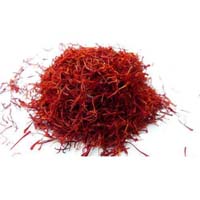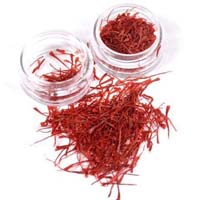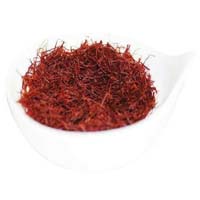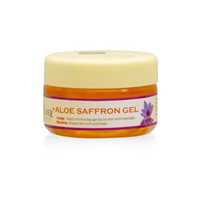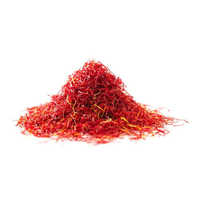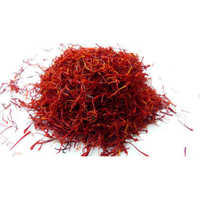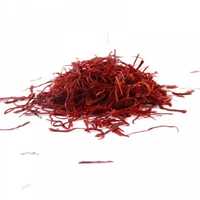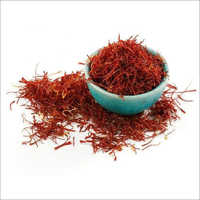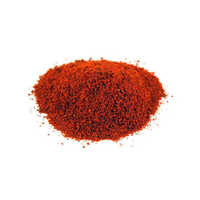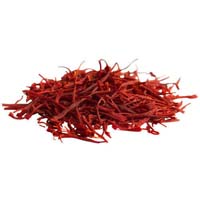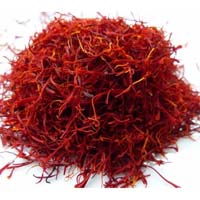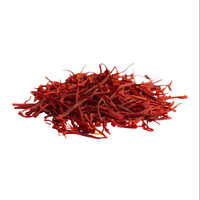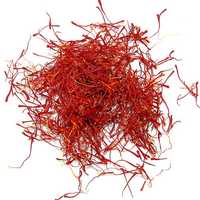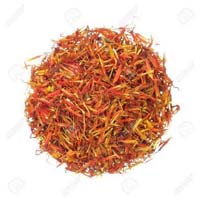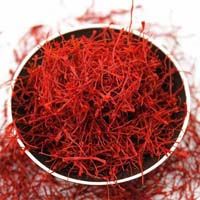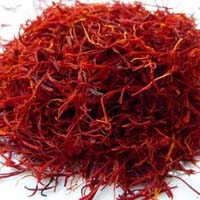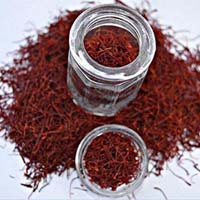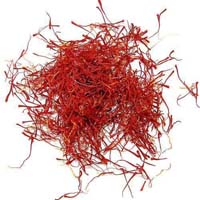Saffrons
(1831 products)
Explore More Categories
Made in India
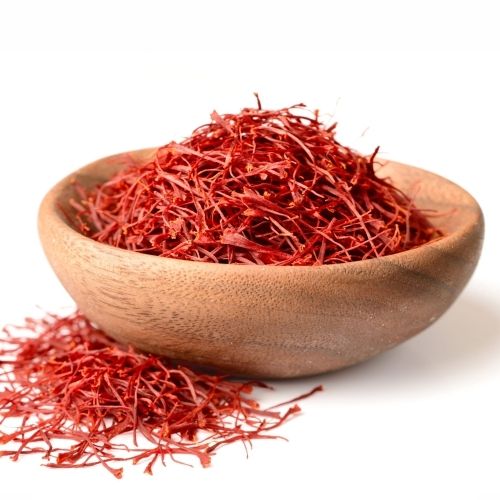
Premium Quality Natural Pure Saffron
Price: 180 INR (Approx.)/Gram
MOQ - 100 Gram/Grams
Product Type - Saffron
Style - Dried
Packaging - Mason JarVacuum Pack
Business Type: Exporter | Trading Company
SAHIK PRIVATE LIMITED
Made in India
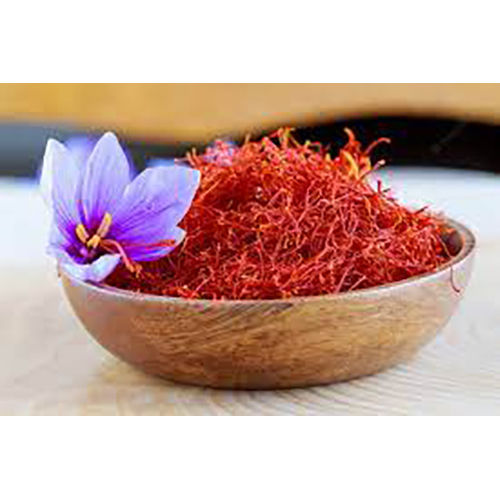
Pure Saffron Grade: First Class
Price: 300000 INR (Approx.)/Kilograms
MOQ - 100 Kilograms/Kilograms
Form - Wax
Style - Dried
Grade - First Class
2 Years
Business Type: Manufacturer | Exporter
YEDHANT INTERNATIONAL
Verified Exporter
( Accepts only Foreign Inquiry)

Wholesale Price Export Quality 100% Natural Pure Dried Saffron For Flavouring
Product Type - Saffron
Style - Dried
Part - Flower, Other
3 Years
Business Type: Supplier | Exporter
MAYDAY GLOBAL
Verified Exporter
( Accepts only Foreign Inquiry)
Made in India
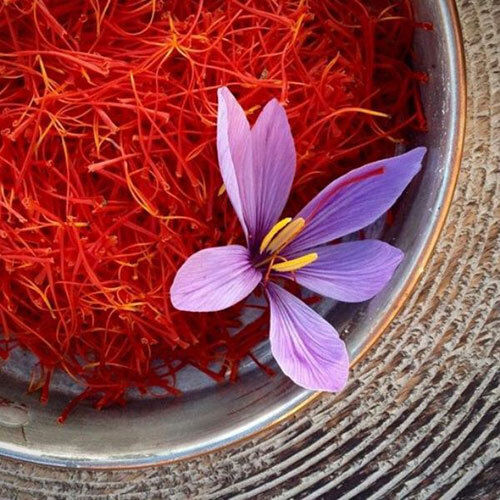
Flower Threads Saffron Purity(%): 100%
Price: 800 INR (Approx.)/Kilograms
MOQ - 100 Kilograms/Kilograms
Form - Wax
Style - Dried
Extraction Type - Solvent Extraction
2 Years
Business Type: Supplier | Exporter
GLOBUS GLOBAL TRADE IMPORT AND EXPORT
Verified Exporter
( Accepts only Foreign Inquiry)
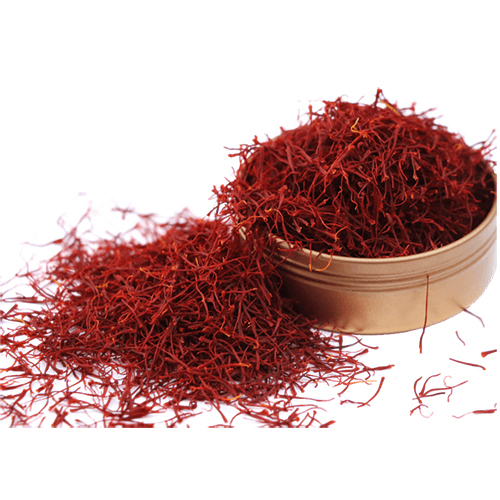
Natural Saffron Purity(%): 100%
Price Trend: 1500.00 - 3100.00 USD ($) (Approx.)/Kilograms
MOQ - Any Bulk Order Kilograms/Kilograms
Product Type - Saffron
Style - Dried
Purity(%) - 100%
5 Years
Business Type: Manufacturer | Distributor
VISION INTERNATIONAL
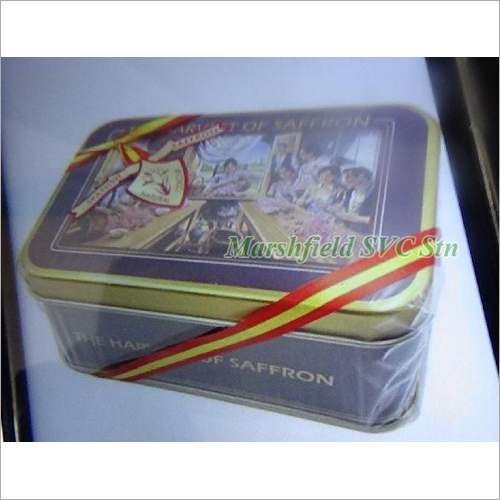
Natural Iranian Saffron
4 Years
Business Type: Exporter
MARSHFIELD SVC STATION

Pure Kashmiri Saffron Purity(%): 100%
Price: 400 INR (Approx.)/Kilograms
MOQ - 100 Kilograms/Kilograms
Form - Wax
Style - Dried
Extraction Type - Solvent Extraction
2 Years
Business Type: Supplier | Exporter
SUNSEEM INTERNATIONAL
Made in India

Pure Saffron Purity(%): High
MOQ - 10 Gram/Grams
Product Type - Pure Saffron
Variety - Fresh
Purity(%) - High
1 Years
Business Type: Supplier | Trading Company
PRM ENTERPRISES

Saffron Ghar Ghanti, Capacity: 7-11 kg/hr
7 Years
Business Type: Manufacturer | Supplier
RELITECH INDUSTRIES PVT. LTD.
Indian Inquiries Only
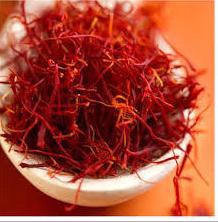
Saffron
9 Years
Business Type: Manufacturer | Distributor
ABBAY TRADING GROUP, CO LTD
Made in India
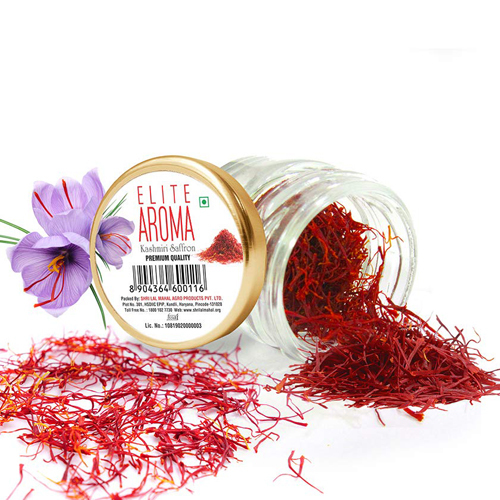
Saffron .
8 Years
Business Type: Manufacturer | Exporter
VI EXPORTS INDIA PRIVATE LIMITED
Made in India
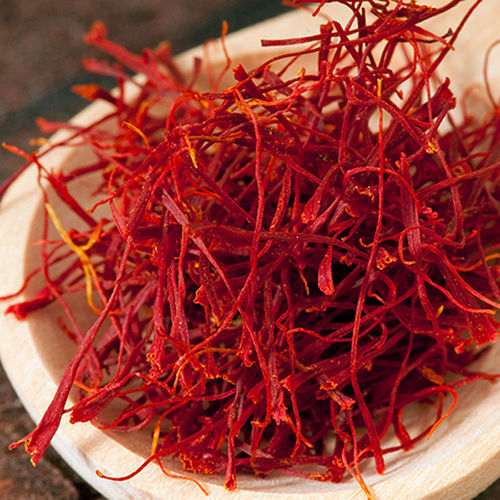
Red Saffron Grade: First Class
MOQ - 100 Kilograms/Kilograms
Form - Wax
Style - Dried
Part - Leaf
2 Years
Business Type: Manufacturer | Distributor
SOUMYA OVERSEAS
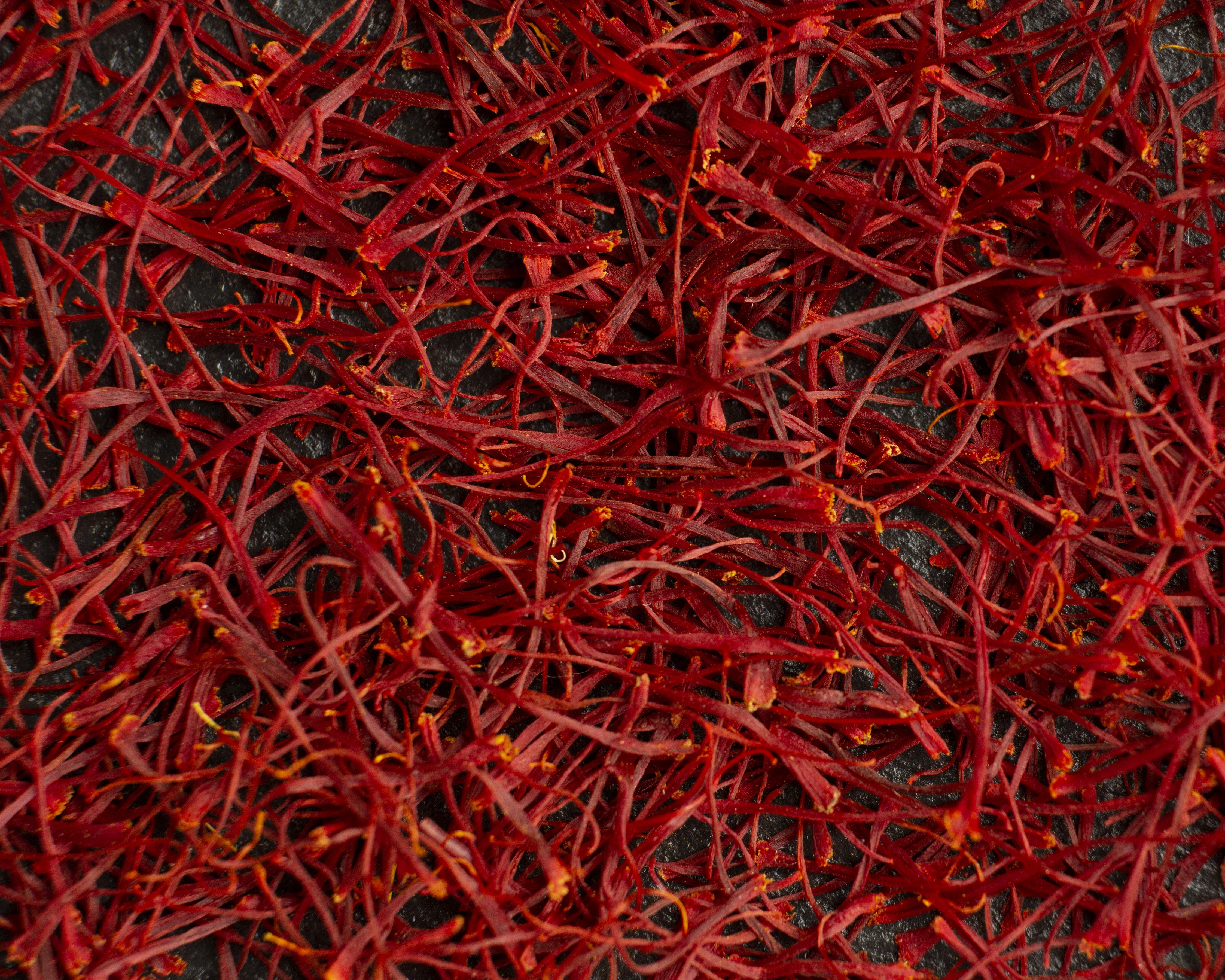
Rich In Taste Fresh Saffron
Price: 400 INR (Approx.)/Gram
MOQ - 100 Gram/Grams
Product Type - Fresh Saffron
Part - Leaf
Grade - Food Grade
2 Years
Business Type: Manufacturer | Distributor
Jivandeep Seva Sansthan
Made in India

Pure Saffron Grade: Food Grade
MOQ - 50 Kilograms/Kilograms
Product Type - Saffron
Form - Other
Style - Dried
1 Years
Business Type: Exporter | Trading Company
Tradetastic Overseas Pvt Ltd
Verified Exporter
( Accepts only Foreign Inquiry)
Made in India
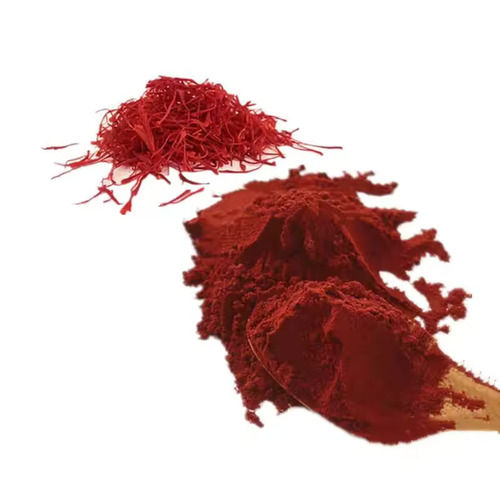
Food Grade Saffron Extract Crocin
Price: 100 USD ($) (Approx.)/Kilograms
MOQ - 500 Kilograms/Kilograms
Product Type - Herbal Extract
Variety - Safflower Extract Powder
Style - Dried
2 Years
Business Type: Manufacturer | Distributor
BRASGLOBALCHEMS
Verified Exporter
( Accepts only Foreign Inquiry)

Natural Saffron
Price: 1000 INR (Approx.)/Piece
MOQ - 100 Piece/Pieces
4 Years
Business Type: Manufacturer | Supplier
NASCENT STAR TRADING PRIVATE LIMITED
Made in India
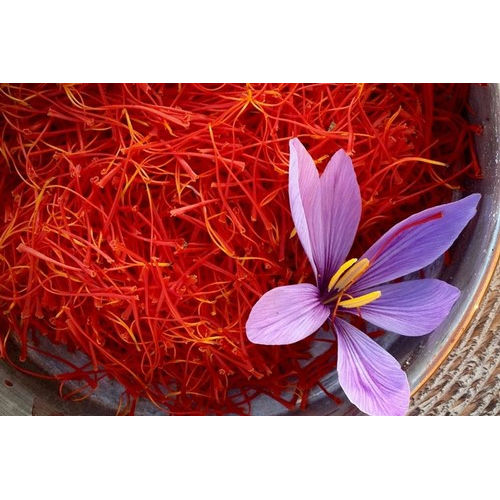
Kashmiri Saffron Grade: Lacha
MOQ - 1 Kilograms/Kilograms
Product Type - Kashmiri Saffron
Variety - Kashmiri Saffron
Style - Dried
9 Years
Business Type: Manufacturer
Aurashine Essentials Private Limited
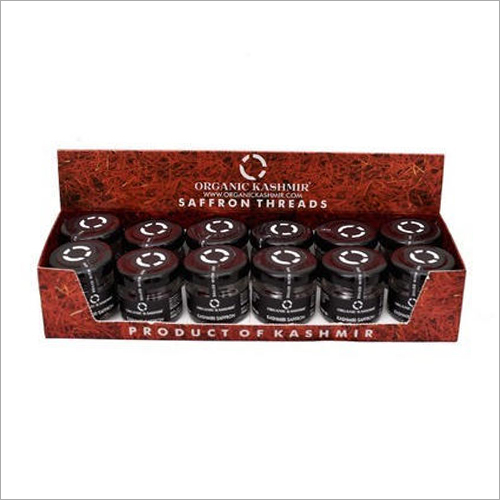
Organic Kashmir Saffron
Price Trend: 60000.00 - 200000.00 INR (Approx.)/Kilograms
MOQ - 500 Kilograms/Kilograms
7 Years
Business Type: Manufacturer | Distributor
ORGANIC KASHMIR PVT LTD

Kashmiri Saffron Grade: A
Price: 360 INR (Approx.)/Gram
MOQ - 1 Gram/Grams
Product Type - Kashmiri Saffron
Variety - Dried
Form - Other
3 Years
Business Type: Manufacturer
THE HIND RAJASTHAN WARAQ
Made in India

Healthy And Nutritious Fresh Saffron
Price: 150 INR (Approx.)/Kilograms
MOQ - 200 Kilograms/Kilograms
Product Type - Fresh Saffron
Part - Leaf
Grade - Food Grade
1 Years
Business Type: Supplier | Exporter
GHEPAN FOODS PVT LTD

Herbicure Saffron Purity(%): 100%
Price: 2000 INR (Approx.)/Pack
MOQ - 100 Pack/Packs
Product Type - Natural Saffron
Form - Wax
Style - Dried
3 Years
Business Type: Manufacturer | Distributor
SIDHANKAR ENTERPRISES LLP
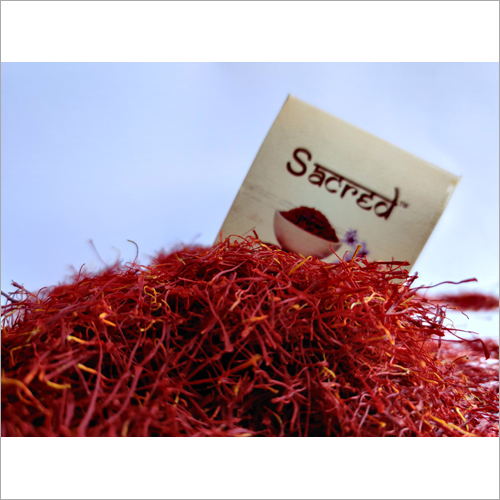
Sacred Saffron
Price: 350 INR (Approx.)/Gram
MOQ - 10 Gram/Grams
4 Years
Business Type: Manufacturer | Supplier
PURI BROTHERS
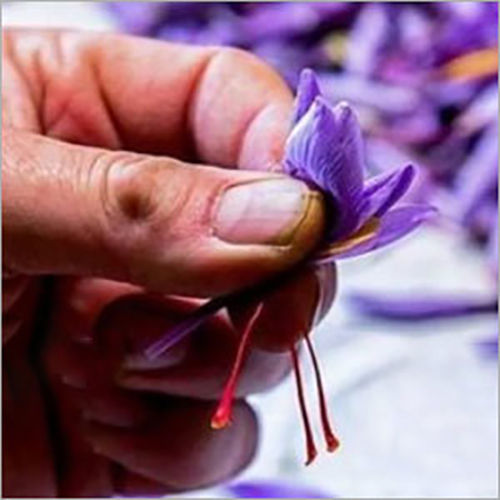
Kashmiri Natural Saffron - Grade: A
Price Trend: 100-250 INR (Approx.)/Gram
MOQ - 100 Gram/Grams
Product Type - Natural Saffron
Variety - Fresh
Form - Other
4 Years
Business Type: Manufacturer
DIGVIJAY

Natural Saffron
5 Years
Business Type: Supplier | Trading Company
AADIANANT FOOD AND BEVERAGES PRIVATE LIMITED
Indian Inquiries Only
Made in India

Natural Saffron Grade: First Class
MOQ - 100 Kilograms/Kilograms
Form - Wax
Style - Dried
Extraction Type - Solvent Extraction
1 Years
Business Type: Manufacturer | Exporter
Marionne Global
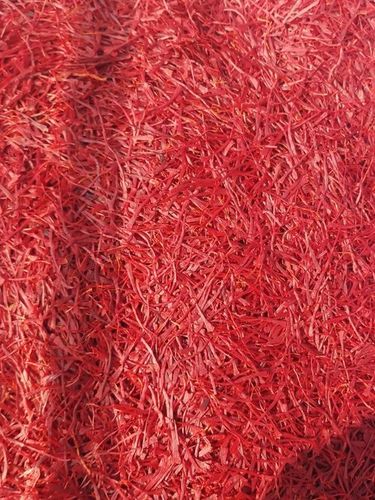
Natural Pure Kashmiri Saffron
MOQ - 1 Kilograms/Kilograms
Cultivation Type - Normal
Texture - Dried
Physical Form - Solid
2 Years
Business Type: Manufacturer | Supplier
FARHEEN FRUITS COMPANY
Indian Inquiries Only
Made in India
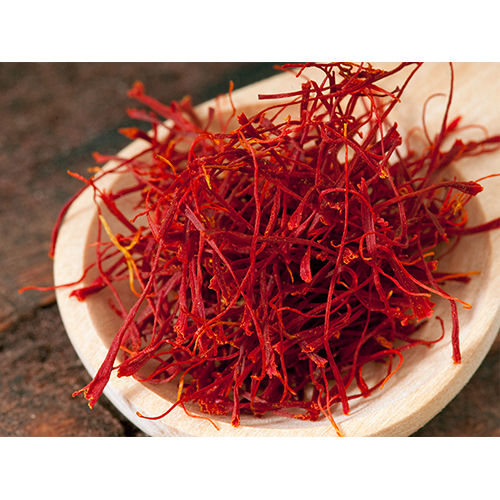
100 Percent Pure Saffron - Packaging: Mason Jar Vacuum Pack
MOQ - 10 Kilograms/Kilograms
Product Type - Pure Saffron
Style - Dried
Purity(%) - 99 %
1 Years
Business Type: Distributor | Supplier
M/S UDAYRAJ TRADERS

Pure Saffron Purity(%): 100% Organic
Price: 120 INR (Approx.)/Gram
Product Type - Pure Saffron
Variety - Natural
Style - Dried
4 Years
Business Type: Manufacturer | Supplier
CSR IMPORTS & EXPORTS
Indian Inquiries Only
Saffrons Manufacturers | Suppliers in India
| Company Name | Location | Member Since |
|---|---|---|
| Abbay Trading Group, Co Ltd | Mersin, Turkey | 9 Years |
| Aurashine Essentials Private Limited | Mumbai, India | 9 Years |
| Vi Exports India Private Limited | New Delhi, India | 8 Years |
| Relitech Industries Pvt. Ltd. | Ahmedabad, India | 7 Years |
| Organic Kashmir Pvt Ltd | New Delhi, India | 7 Years |
| Vision International | Karnal, India | 5 Years |
| Aadianant Food And Beverages Private Limited | Greater Noida, India | 5 Years |
| Marshfield Svc Station | London, United Kingdom | 4 Years |
| Nascent Star Trading Private Limited | Bengaluru, India | 4 Years |
| Puri Brothers | Jalandhar, India | 4 Years |
The History and Cultivation of Saffron
The treasured spice saffron, commonly referred to as "red gold," has been continuously growing for thousands of years. The dried strands are made from the dried stigmas from the crocus plant and serve as a delicacy in numerous culinary traditions worldwide. Saffron cultivation goes back to the days of ancient Persia when it was appreciated for both, its therapeutic benefits and food preparation and beverage flavoring. Saffron was eventually cultivated in multiple nations, like India, Spain, and Italy. Nowadays, the bulk of saffron is still grown in Iran, where it serves an important economic part and generates feelings of pride among people everywhere.
The Different Grades and Types of Saffron
Saffron may be categorized into several grades and types depending on its level of purity and color. The parts of the plant used, how the plant gets selected, and how preparation is done together define different grades:
- Grade 1: The purest variety of saffron, commonly referred to as "Super Negin," is categorized as "Grade 1" and comes entirely through the crimson stigmas of the saffron crocus flower. Because of its bright red color, intense fragrance, and extraordinary color strength, this specific kind of saffron is considered to be the most costly and demanding.
- Grade 2: The "Sargol” comes through the bright red stigmas and a tiny bit of the yellow style of the saffron crocus bloom. This type of saffron still demonstrates exceptional quality, although the color is a little less vibrant than Super Negin.
- Grade 3: “Pushal” comes through vibrantly colored red stigma, a few little yellow styles, and part of the stalk from the saffron crocus flower. This specific kind of saffron is less expensive and shows less color than Super Negin and Sargol.
- Bunch: The ultimate grade is "Bunch" that includes the petals and golden style of the complete saffron crocus flower. The color capacity of this grade of saffron is lowest compared to the others, which makes it of the least value.
Apart from the grade, saffron is also categorized based on their origin, such as Persian saffron, Kashmir saffron and Iranian saffron.
Saffron and its Uses
Saffron is a widely treasured spice employed for countless years in food preparation, medicine, and cosmetics. Saffron can be found in foods like paella, risotto, and Biryani due to its distinctive taste, smell, and pigment. Saffron has historically been utilized for medical use and for its numerous culinary benefits. Saffron's skin-brightening and anti-aging qualities have made it an essential component in the cosmetic sector.
The Health Benefits of Saffron
Saffron may be beneficial for treating diseases like arthritis and other inflammatory illnesses since it contains substances that can help decrease inflammation in body. It possesses mood-regulating qualities, which make it potentially beneficial for disorders including anxiety and depression. It could aid in enhancing cognitive abilities, including memory and attention span. It may be useful in preventing or treating some forms of cancer since it possesses anti-cancer characteristics. Compounds in saffron may aid in preventing eye damage and enhancing eyesight.
How to Store and Preserve Saffron?
For the saffron’s quality to stay unaffected by humidity and air, keep it in a tightly sealed container. To prevent the deterioration of the molecules that provide flavor and smell, they must be kept far from exposure to heat and sunlight. Saffron can lose its effectiveness over time if exposed to air; you must keep the container well closed when not in use. It is recommended to crush saffron right before using it in the food.
The Economics of Saffron Production
Production of saffron has an opportunity to become an economically viable sector, however, it additionally demands a lot of assets, labor, and thoughtful preparation. Whatever the amount of saffron manufactured could bring in substantial revenue owing to its high price tag, but it is also expensive to manufacture. Saffron manufacturing could bring considerable financial advantages, primarily to small-scale farmers across the areas where it is produced. Furthermore, increasing saffron demand on a global level offers farmers and business owners captivating potential.
FAQs: Saffron
Q. What is Saffron and where does it come from?
Ans: The stigmas from the Crocus sativus flower are the basis of the expensive and unique spice known as saffron. Saffron is prized for its unique flavor, scent, and color regardless of its expensive price. It is added in a wide range of dishes. It is considered that saffron initially appeared in the Mediterranean area, particularly in Iran and Greece.
Q. How can I tell if the Saffron I am buying is of good quality?
Ans: Look for long, thin threads with a deep red color and a somewhat lighter orange-red color at the tips when viewing the saffron. Additionally, the saffron strands must be dry and brittle to the touch. The saffron may be old or of lesser quality if it is damp, sticky, or yellow in color. The scent and flavor should also be taken into account. Saffron of the high grade should smell strong, flowery, and somewhat sweet. It should taste sharp and somewhat harsh when consumed. An indicator of lesser-grade saffron could be a faint or missing scent or flavor.
Q. How is Saffron used in traditional medicine?
Ans: Saffron was commonly utilized to improve one's mood, alleviate cramps during menstruation, and assist with digestion. It was used to treat depression and feelings of anxiety. The antidepressant effect of the extract of saffron is comparable to that of pharmaceutical drugs. In addition, it has been used to cure inflammatory processes, lessen the possibility of cardiovascular disease, and improve vision. Menstrual cramps can be alleviated and stomachaches can be calmed by drinking saffron tea. Saffron-infused skin care products may additionally decrease inflammation while evening out the color of the skin.
Q. Is Saffron safe for consumption and are there any risks or side effects associated with it?
Ans: When utilized as a flavoring element in cuisine in small amounts, saffron is often regarded as safe for consumption. However, excessive usage may have negative consequences, including death in extreme circumstances, dizziness, nausea, and vomiting. It is advised to utilize saffron cautiously and to adhere to the daily dosage of 1.5 grams.
Related Categories
Aquatic Products
Asafoetida
Bean Products
Beverages
Canned Food
Cashews
Castor Oil
Cereals
Chocolates
Coconut
Coffee
Confectionery & Bakery Products
Cookies & Biscuits
Dairy Products
Dehydrated Food Products
Dehydrated Vegetables
Dietary Supplements
Dried Vegetables
Drinking Water
Edible Oils & Fats
Edible Salt
Egg Products
Fast-Food
Flavours & Food Additives
Flour
Food Products
Fresh Fruits
Frozen & Dried Fruit
Frozen & Processed Food
Frozen Vegetables
Grain
Health Food
Honey Products
Jaggery & Jaggery Products
Margarine
Marine Products
Meat & Poultry
Molasses
Mouth Freshener
Mushroom & Truffle
Noodles
Nuts & Kernels
Pan Masala
Papad
Pickles & Murabba
Plant & Animal Oil
Pulses
Rice
Saffrons
Seafood
Seeds
Snacks
Spices & Seasonings
Starch & Derivatives
Sugar & Sweeteners
Sweets & Namkeen
Tamarind Products
Tea
Related Categories
Popular Products
Human HairForklift TrucksServo Voltage StabilizerBasmati RiceBackhoe LoaderCarry Bag Making MachineDrum LifterElectric StackerScissor LiftsIndustrial Vibrating ScreenRotameterFlowmeterRotary Air CompressorIndustrial Eto SterilizerRice Packaging MachinesShredding MachineHammer MillAutomatic Labelling MachineDiesel ForkliftAerial Work PlatformStorage Rack SystemEpoxy ResinMild Steel BarStainless Steel SheetsStainless Steel StripsBag Filling MachinesAsphalt PlantsSlat ConveyorOintment PlantPlanetary MixersLadies KurtisLed LightsCctv CameraBall ValveAnti Cancer MedicineAir CompressorIncense SticksSolar LightsGoods LiftsVitrified TilesStainless Steel CoilsPvc PipesPvc Pipe FittingsUpvc PipesUpvc Ball ValvePipe Elbows